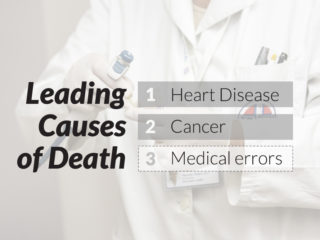When you have been injured in an accident, one of the objectives of financial compensation awarded by a judge or jury is to put you, the Plaintiff, in the same financial position you would have been in had your accident not occurred. In this regard, your lawyer may retain an accountant or economist, and sometimes an actuary, to help calculate these financial losses arising out of your accident.
Just as lawyers rely on the expert opinions of physicians to give evidence to the court about your injuries, lawyers also rely on financial experts to inform the court about your past and future loss of income, career trajectory, retirement prospects, trends in your industry, earning capability, and, if you are self-employed, the impact your accident has had on the viability of your business.
Members of the jury are not legal or financial experts. They need to be informed of certain key financial concepts, in order to make a sound decision about your economic loss claim. Some of these key concepts are summarized below.
- Past and Future Loss of Income – an accountant or economist will review your past earnings history. In some cases, a Plaintiff’s post-accident income-earning stream is nil. The accountant and economist will also make certain reasonable assumptions about your industry and your work history, and provide an opinion about what your likely income stream would have been, had you not been injured. The expert will then compare both scenarios (i.e. what you did earn and what you would have continued earning) to your earnings after the accident, and will calculate the losses in income, up to retirement age, as a result of the accident. Where the injured person is a child, this calculation is more complicated, along with the assumptions underlying the calculation. The court will rely on the accountant or economist for information about what the child would likely have earned – based on statistics, report cards and family educational history, for example – had they not been injured.
- Present Value – the expert will explain the concept of “present value” to the jury. A calculation of your future loss of income does not entail multiplying your annual income by the number of years you would have remained in the workforce. The “present value” of an income stream is the current value of a stream of income in the future, using a discount rate. It is always less than the summation of the yearly amounts. This concept recognizes that money earns interest over time. For example, if you want to have $1,000 in the bank in one year’s time, you can deposit a lesser amount in the bank today. The lump-sum awarded to you by a judge and/or jury will reflect this concept.
- The time frame for your future losses – the expert has to advise the judge and jury as to how long your financial losses will extend into the future. The time frame depends on such factors as your pre-accident expected retirement age and pre-accident life expectancy. The accountant or economist will look at trends in your industry, your employment history, your pre-accident health, and statistics to determine the reasonable age at which you would have retired. Statistics and actuarial materials will be used to determine your pre-accident and post-accident life expectancy.
- Loss of Dependency following a fatal accident – Financial losses due to the death of an income-earning spouse or parent – also called Dependency Losses – are calculated differently than loss of income sustained by an injured person. Dependants are entitled to enjoy the same quality of life had the injured person survived their accident, and an award to the survivors is meant to allocate a portion of the deceased’s earnings for the surviving dependants’ benefit. The accountant or economist uses a dependency ratio to calculate these financial losses. There are two approaches that have been accepted by the courts – a “modified sole-dependency” approach and a “cross-dependency” approach. It is beyond the scope of this blog article to define these concepts; however, your economic loss expert will define the appropriate approach and calculate the losses accordingly, and present them to the judge and jury.
- Pensions and Benefits – Was a retirement pension available to you in your pre-accident workplace? Did you have access to a handsome benefits package, such as dental and prescription care? Some or all of these “perks” may not be available to the injured person any longer, or their value may be altered. For example, if you have been out of the workforce for several years, but return to your job on a part-time basis, your pension may accrue differently than had you not been injured. More significantly, if you are no longer working, your pension may not accrue at all. You may no longer have access to a benefits package. Judges, juries and lawyers do not have the expertise to calculate pension losses and the value of lost benefits packages. Accountants, economists and actuaries can do so. Depending on your circumstances, the loss or reduction in value of a pension plan can be a significant aspect of your entire damages claim – and your lawyer will rely on a financial expert to calculate those damages. Similarly, the amount of your CPP benefits available at age 65 may be affected by your accident and injuries – the accountant will be able to forecast and calculate these losses.
This is just a brief overview of the value in hiring a financial expert in a personal injury case. Your lawyer may also retain an accountant to calculate other financial losses such as lost educational expenses, the “present value” of future care costs, and the value of past and future housekeeping expenses. The accounting expert is also invaluable in calculating business losses for a self-employed plaintiff.












